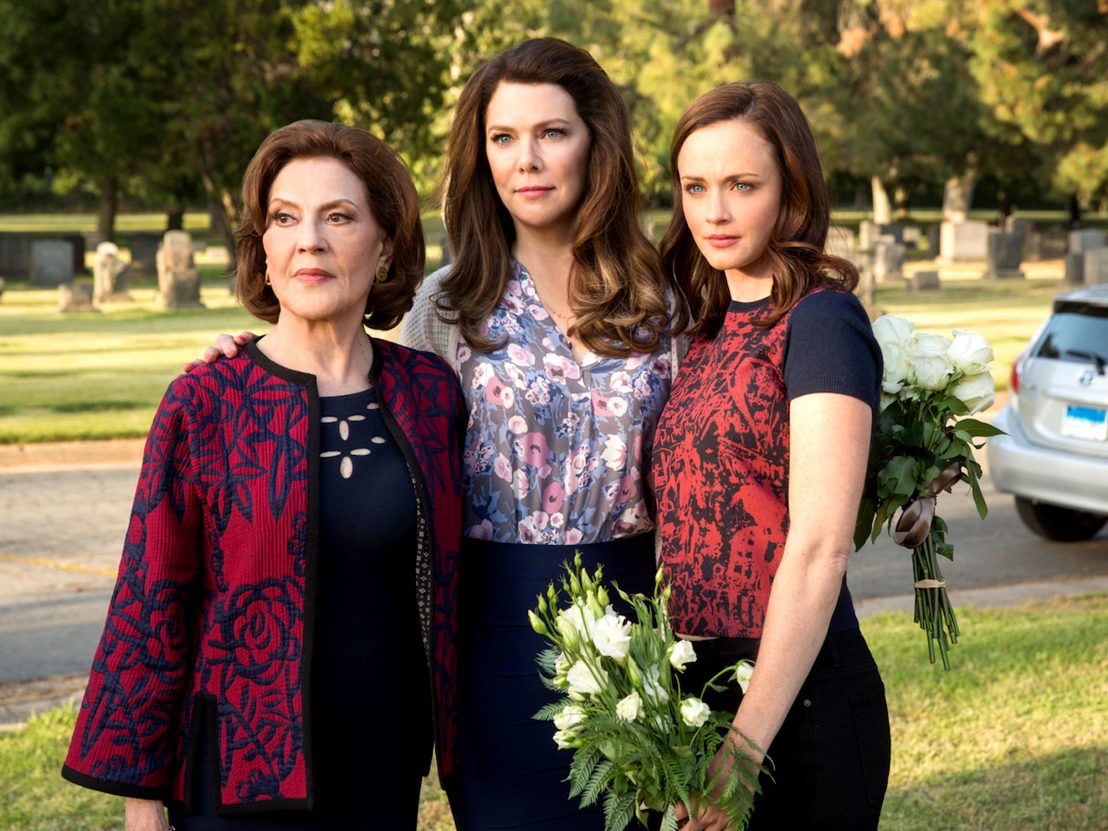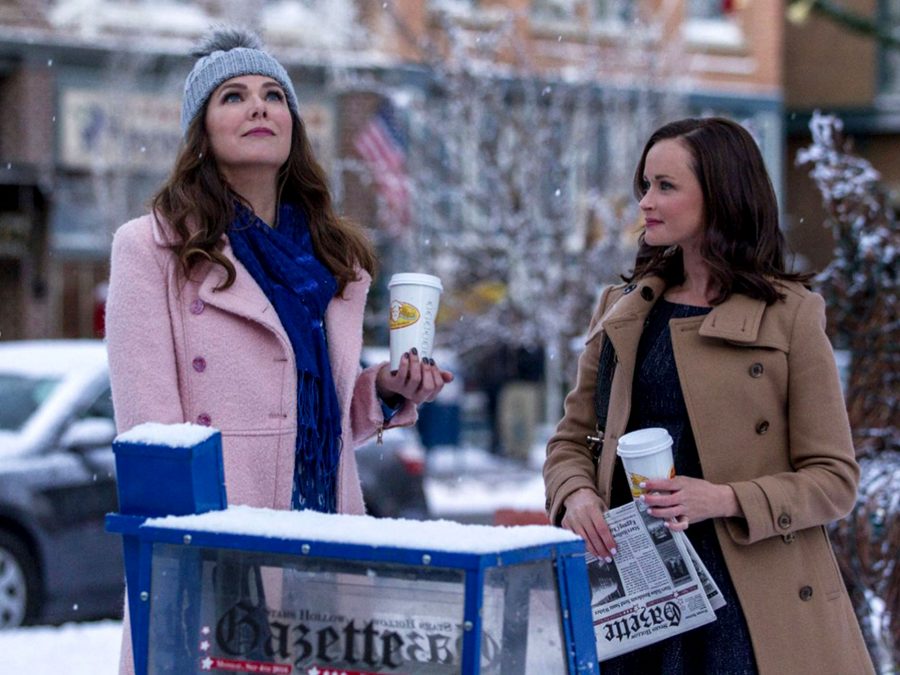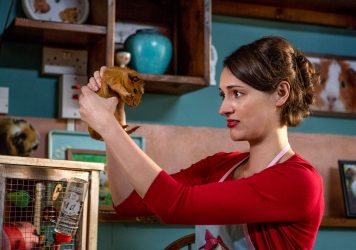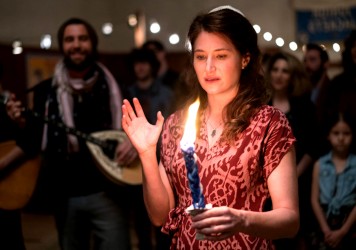
With the abject uncertainty of 2016, a basic fear for the future was made all-too real in a single day this November. As such, the return of Gilmore Girls, set in the the snark-free Connecticut suburb of Stars Hollow, couldn’t have come at a better time. After all, it’s a show where the central conceit is concerned with the optimistically nostalgic ritual of a weekly family dinner, usually based on an attempt to repair something or someone that’s broken.
The family in question are the Gilmores – father Richard (the late Edward Herrmann), mother Emily (Kelly Bishop) and daughter Lorelai (Lauren Graham). Rory is Lorelai junior, who has inherited her mother’s affinity for caffeine and endless supply of witticisms on everything from Paul Thomas Anderson (“She had a bad reaction to Magnolia. She sat there for three hours screaming ‘I want my life back’,” Rory says when asked why her mother won’t watch Boogie Nights) to Brokeback Mountain and Donna Reed.
Richard is a successful insurance broker and both he and Emily enjoyed the high society life that comes as a result. This left Lorelai to grow up within the rarified trappings of debutante balls and dinner parties. It was a stifling world, and one that saw her leave when she fell pregnant at 16. She remains estranged until her daughter is the same age and she wishes to send her to the Ivy League breeding ground of Chilton and achieve her dream of being a journalist.
Existing nearly alone for 16 years, Rory and Lorelai have a relationship that, initially, is easy to envy. They’re so in tune they’re mistaken as sisters. After growing up in a house built on pleasantries, rules, and ‘appropriate behaviour’, Lorelai is determined to be open in a way her parents never were. Their bond is tested over the seven seasons of Gilmore Girls as Rory exists between the high-class world of Chilton, with frenemy Paris (Liza Weil), and home, with best friend Lane (Keiko Agena).
They’re both torn between warring love interests – Lorelai on admitting her feelings to Luke (Scott Patterson) who owns the diner they visit for their daily coffee fix, pursuing Rory’s teacher Max (Scott Cohen), or reconciling with Rory’s father (David Sutcliffe). Then there’s Rory, sandwiched between the impulsive Dean (Jared Padalecki), sensitive but unpredictable bad boy Jess (Milo Ventimiglia), or trust fund baby Logan.

Lorelai realises her personal ambitions, opening her own inn with best friend Sookie (Melissa McCarthy), and Rory pursues hers and reflects on whether it’s what she really wants. When Rory attends Yale in season four, their mutual decisions see her and Lorelai grow apart almost beyond repair. Rory even temporarily lives with her grandparents and assumes the life Lorelai didn’t want. Over the coming seasons, their separation is almost unbearable.
But even in the chaos of the later seasons, as the show goes off the comfortably melodramatic rails, there’s a certainty to Gilmore Girls that makes it irresistible. It’s a show built on nostalgia and reliability. Stars Hollow is small without being oppressive (never mind that in a real town, everyone would be way too involved in each other’s business). Walk down the street and there’s always someone to recognise and always something to see, whether it’s an entertaining town meeting or the presence of Taylor Doose, the town’s most involved citizen.
Then there’s Luke’s diner and the regular dinners, and the regular town eccentrics; comfortably stock features that give the show an optimistic routine. Amy Sherman-Palladino’s endless snappy and reference-fuelled dialogue is infectiously, joyously literate and a challenge to keep up. But Gilmore Girls works like gangbusters when it capitalises on this easy relatability: Lorelai’s desire to live a more open life free of her parents; the small rituals with Rory of coffee; junk food; and movies that the show is remembered for; conversations about insignificant things.
When Gilmore Girls ended abruptly in 2007, it was with hope for the future. Rory (Alexis Bledel), having graduated from Yale after much soul-searching and heartbreak, lands a job covering Barack Obama on his presidential campaign. It undoubtedly set the tone for the world the show was leaving behind, one where change and hope were in the air. It doesn’t need to be said that the mood of Gilmore Girls triumphant return is quite the opposite, one of division and sadness. When Rory and Lorelai return to their “little corner of the world” courtesy of Netflix, for once, it’ll be like nothing ever changed.
Published 25 Nov 2016

From Fleabag to Transparent, the year’s best television has been dominated by incredible women.

A tribute to some of the most memorable comic turns from women actors, featuring an immortal Meryl Streep.

In Jill Soloway’s hit show, women’s emotional outbursts are crucially not stigmatised as “hysterical”.